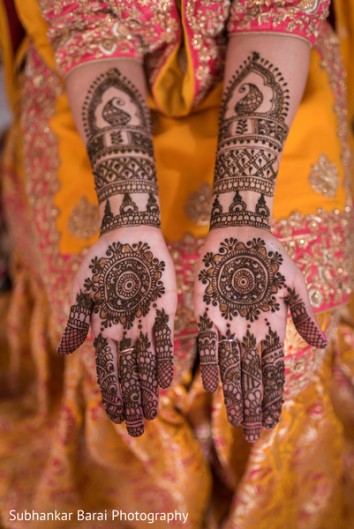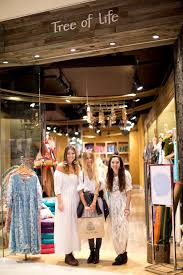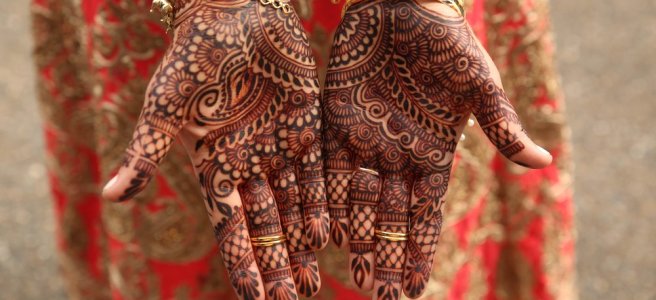A Brief History
Known in Indian as Mehndi, otherwise known as Henna in Arabic, is a form of body art dating back over 5000 years originating from South Asia, the Middle East and Africa with “some of the earliest records of henna come from Egypt and traces have been found on the mummified bodies of Cleopatra and King Ramses II“. The practice of applying henna can not only be used for body art, but also as relief from the intense heat of of the countries where henna originates from.

Contemporary decorative henna is closely linked with with traditional celebrations. Additionally, the designs of the body art vary due to both culture and geographic regions. For example, mehndi consists of fine lines of lacy, floral, paisley patterns. Whereas, henna is often associated with bold lines and geometric designs.
A significant traditional use of Mehndi is within Indian weddings and is said to be one of the most important pre-wedding ceremonies.The day before a woman’s wedding, the bride to be will undergo the process of embellishing her hands, palms, arms and feet with intricate mehndi designs. The darker the Mehndi stains the skin is said to be representation of the strength of the marriage. A superstition regarding Mehndi is that if a single woman receives scrapings of Mehndi from a newlywed bride, not long after she will find the person she is meant to marry. Furthermore, in Indian weddings, the groom will also have Mehndi patterns completed on his arms before the wedding.
Moreover, Hindu gods and goddesses are can be seen with Mehndi patterns on their body such as of Ganesha and Lakshmi.
In Arabic culture, henna has been associated with luck, health and sensuality for over 5000 years. Henna is also used for weddings within Arabic culture, representing good luck and fertility; it has baraka and protects against jnoun. Again, in Arabic culture, henna is also used in wedding traditions.

The art of Henna is so significant in Arabic culture that a henna artist from the UAE,Sara Vazir, stated that henna is an essential accessory for women. She says that “No outfit is complete without some organic arm candy, and henna can be seen at all events, from fashion launches to everyday get-togethers”.
Today, Henna has become globalised due to tourism can also be seen in popular culture. A good example is that of pop-star Rihanna. She recently got a tattoo inspired by henna art. Additionally, henna can also be used for cosmetic procedures, such as temporary eyebrow tinting and hair dye. Henna can also be seen at numerous events in Western countries, such as fetes, fairs and festivals.
Our Experience
Purchasing the Henna
When I initially searched for henna products online, I found a range of websites that sold the pre-made paste but soon realised many were either too expensive or sold out. After hearing of horror stories online I also felt reluctant to buy the products without physically seeing the henna in person.

Afterward, I started searching in our local shopping mall and stumbled upon the store, Tree of Life. From outside, the store looked like it sold clothing, accessories and a few furniture goods. Upon closer inspection, I soon found out that the store also sold Indian inspired items such as incense, flags, and fabrics. When I asked the shop assistant if she sold henna, she directed me to the service desk where they housed henna kits, individual tubes of henna paste and a box set of henna piping cones. Of the options I had to choose from, I decided on the Shelly instant henna paste as they looked the most authentic and worth its value.
Looking at the box, I can see that the brand is Shelly, however, the actual manufacturing company is called Kaveri Mehandi. According to the company’s Facebook page, Kaveri was first established in 1930, with henna cultivated in the Sojat District of Rajasthan, India. The company was commercially established in 1988, with a vision to manufacture and distribute superior quality natural herbal henna based products.
Nowadays, the Kaveri Mehendi Cone is one of the best selling henna products in the world and is exported to more than 30 countries around the world. It is known for its superior quality and chemical free ingredients.

According to Henna King, a website where you can purchase this brand of henna, the product is described as:
“Shelly Henna Paste comes to us directly from India and delivers a deep dark stain with no mixing or mistakes. The tube comes in a box with six tips for fine, medium, and wide designs. Use it on hands, feet or anywhere on the body. No mixing or messing with powders.”
In terms of where else you can buy henna, there are many retailers online that sell them one-off, or as in bulk. I simply preferred to buy the product in person. Had I searched further from town, I would most likely find it in middle eastern grocers as henna is also practiced in the Middle East and in Eastern parts of Africa.
Practicing Henna
To make henna paste, henna leaves are ground down into a powder, which is then mixed with a liquid including water, lemon juice or strong tea. Natural henna paste only contains these ingredients, however they are not “shelf stable”, meaning they expire quickly and thus cannot be left on a shelf for over 1 week as they lose their ability to stain the skin.
Our Tree Of Life henna, expectedly was not a natural henna paste. It contained preservatives in order to prolong it’s ability to stain the skin, to be transported to, and sold at the Australian retailer, providing a longer shelf life. This element of our cultural framework as Australian residents, influenced the henna practice and production, and thus our henna experience.

Traditionally, henna paste is applied with either a stick or a twig, or even a syringewhich is common in Morocco. In Indian culture, a plastic cone is used to apply the henna paste- This is what we used- the henna paste already conveniently packaged into piping cones, similar to that of an icing pipe in cake decorating.
However, Verma argues that this packaging, although facilitates convenience and ease in producing henna designs, does impact it’s shelf life, particularly in commercial practice. “Since the paste of henna is made in water, on storage in various types of packing especially cones, lose its staining power.” (Verma, 2008)

Although not natural henna, in order for us to experience henna bought from an Australian retailer “the paste made from irradiated henna powder in combination with citric acid and sodium methyl paraben has a long storage life and good retention of colour.” (Verma, 2008)
With the additive of chemicals, our experience of practicing was dampened by the fear of allergic reactions. “(Natural) henna has a very low allergic potential. In most cases, allergic reactions are caused by the mixtures used by the so-called “artists” which contain not only natural henna but also many chemical coloring agents.” (Kazandjieva, 2017)
To avoid this, a week before engaging in our field site of practicing henna designs on our skin, we did small patch tests to see if we would develop a reaction from the Shelly Henna paste- Fortunately, we did not!
Throughout history, people have been dying their hair with henna oil to achieve the culturally desired red colour. Today, in countries including Australia, Canada and the USA, commercially packaged henna for use as hair dye is available. The colour that it produced is usually an orange, auburn or burgundy. It is also mixed with other natural hair dyes to produce blond, brown and black shades.
Henna eyebrow tattooing is growing in popularity in western cultures, using the same technique. Laura Wilson from istylemag, says “It subtly tints your skin and hair, so you have more shape and definition, but without the scary day (or two) at the beginning of a brow tint, when everyone can tell they’ve been done”, as henna colour develops over days.
https://www.instagram.com/p/BXNSW6pj_W9/?utm_source=ig_embed
Traditionally, henna should be kept on the skin for a minimum of 4 to 6 hours. After time the dry paste is simply brushed or scraped away; Although in our research we only kept ours on for about 30 minutes due to time constraints we experienced with filming and in class.
At first, henna stains are orange after removal, but darken to a deep reddish brown over days due to oxidation. You can see our surprise when we reveal a vibrant orange colour on our skins as opposed to the deep brown we were expecting, unaware of this aspect.
It is traditionally practiced on the soles and palms as they have the thickest layer of skin and absorb the product more effectively, producing the darkest and most long-lasting stains.
Today, henna is growing in popularity with the body art industry. In the western world, body art is one of the fastest expanding business sectors. “Beauty enhancements have taken on new dimensions. No longer are people content with simply applying eyeliner or blush to decorate the face. Rather, the body is more and more a canvas to be painted in vibrant and innovative ways.” (Basas, 2007)

